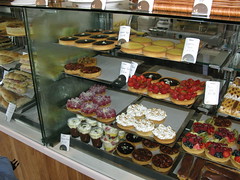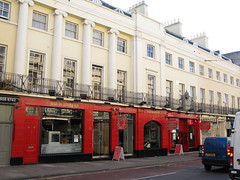GREENWICH Council’s desperation to have the Olympics in Greenwich Park is well known. But has it been playing dirty tricks to fake the appearance of public support for the event? And did it try to rig the recent public consultation meeting on the plans?
The meeting took place at the O2 ten days ago. It was billed as allowing local residents to question Olympic chiefs and Lord Coe, chairman of Locog.
But dozens of residents near the park, many of them opposed to the 2012 plans, were banned from attending on the grounds that they live in the neighbouring borough of Lewisham – even though the borough boundary runs within feet of the park.
Other residents asking to come were told that the meeting was “full,” even as the council continued to urge its own employees to attend.
Dozens of organisations funded by Greenwich Council were given tickets to the meeting and encouraged to make “positive contributions.” Among the speakers at the meeting who apparently spontaneously praised the Games were representatives from the Greenwich Young People’s Council, which is the youth arm of Greenwich Council, and the Greenwich Starting Blocks Trust, a charity owned by the council.
We can reveal that the council has also hired an American PR firm, Vocus, one of whose specialities is creating the appearance of grassroots support for controversial policies. Its chief executive, Rick Rudman, told the Washington Post that “we help large companies and associations build grassroots advocacy groups and do calls to action.”
Vocus’s website says it creates “email campaigns” and “grassroots advocacy programmes… to influence public policy decisions that will affect the sponsoring organisation.” The on-line registration process for attending the Greenwich consultation meeting was routed via Vocus’s web servers.
One of those refused admission, Gillian Stewart, from Blackheath, wrote in a comment on the local 853 blog: “I was told I would not be given a ticket because residents get priority. I live within one mile of the park and I’m not considered a resident? I am not happy.”
Another resident, who asked to remain anonymous, told me: “I can actually see the park from my window. I use it every day and I am very concerned about the Olympic plans, but I am apparently not local enough to have a say at this meeting.”
A Greenwich Liberal Democrat councillor, Paul Webbewood, who attended the meeting, said: “I am not sure why residents were told the meeting was full. Several rows at the side were empty and the council’s internal website was still asking staff to come on the morning of the meeting.”
A spokeswoman for Greenwich Council confirmed that 44 people with addresses outside the borough were refused permission to attend. She said: “This meeting was about the benefits of the Olympics for Greenwich, not about Greenwich Park. I don’t see why my council tax money should be used to pay for people from Lewisham to come to our meetings.”
The spokeswoman said that as many tickets had been issued as there were seats, but admitted that no allowance had been made for ticketholders not turning up. She added that a wide variety of organisations, including some opposed to the council, had been invited to attend and described suggestions that Vocus was mounting a “grassroots advocacy” campaign as “pathetic” and “laughable.”
Michael Goldman, of Nogoe, which campaigns against the equestrian events in the park – and was allowed to attend the meeting – said he was “amazed” that Blackheath residents with a “clear interest” in the Park were kept out. “We don’t need an undercover organisation to get grassroots support,” he said. “We’ve got grassroots support.”
The struggle continues…

